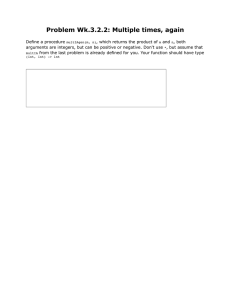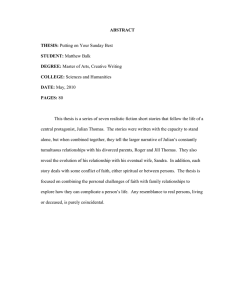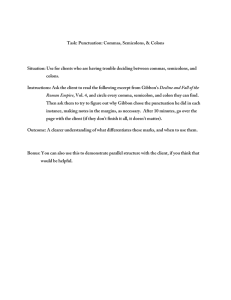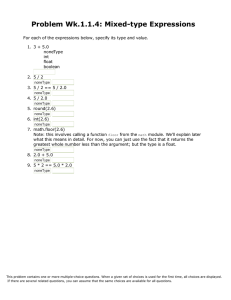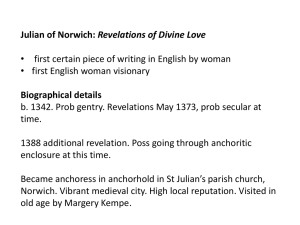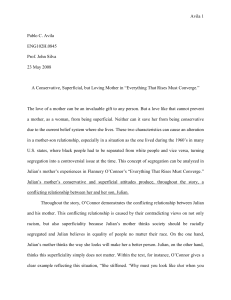16.346 Astrodynamics MIT OpenCourseWare .
advertisement
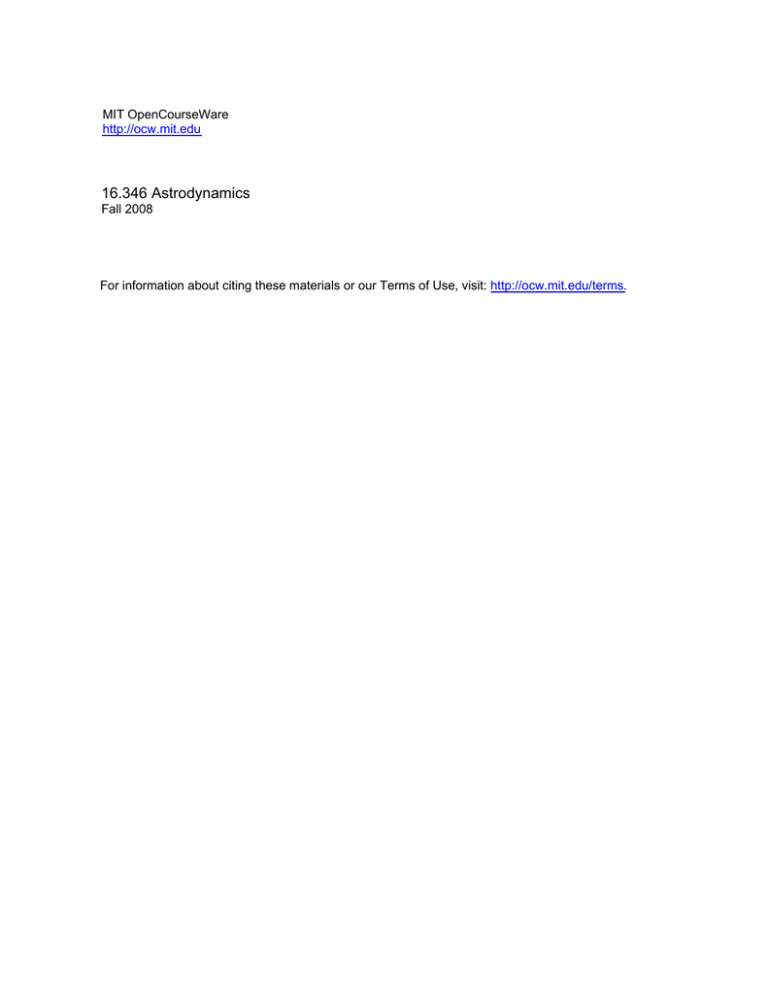
MIT OpenCourseWare http://ocw.mit.edu 16.346 Astrodynamics Fall 2008 For information about citing these materials or our Terms of Use, visit: http://ocw.mit.edu/terms. Exercises 03 1. The average value of the radius r in elliptic motion with respect to time is � � b a3 1 P and dt = r dE r dt = a(1 + 12e2 ) where P = 2π P 0 µ h 2. The average value of the radius with respect to true anomaly is � 2π � 1 r df = a 1 − e2 2π 0 Note: We call a the “mean distance,” but it is not the average value of r . 3. On the other hand 1 P � 0 P 1 1 dt = r a Julian Date The Julian date, JD, is the continuous amount of time measured in days from the epoch January 1, 4713 B.C.,12:00. Not to be confused with the Julian calendar, the Julian period was proposed by the scholar Joseph Justus Scaliger in 1583 and named by him for his father, Julius Caesar Scaliger. Joseph Scaliger proposed a period of 7,980 years of number days to be used in determining time elapsed between various historical events otherwise recorded only in different chronologies, eras, or calendars. The length of 7,980 years was chosen as the product of 28 times 19 times 15; these, respectively, are the numbers of years in the so-called solar cycle of the Julian calendar in which dates recur on the same days of the week; the lunar or Metonic cycle, after which the phases of the Moon recur on a particular day in the solar year, or year of the seasons; and the cycle of indiction, originally a schedule of periodic taxes or government requisitions in ancient Rome. The epoch, or starting point, of 4713 BC was chosen as the nearest past year in which the three cycles began together. The convention to start the JD at noon each day benefits astronomers (who often work at night) because they can make all their observations on a single day. See also Page 437 We can use the following algorithm (from “Fundamentals of Astrodynamics and Applications” by David A. Vallado) to find the Julian date from a known date within the period March 1, 1900 to February 28, 2100 where the Year, Month, Day, Hour, Minute, and Second are known: � ��� � � 1 7 3 Julian Day Number = 367 × Year − INT 4 × Year + INT 12 × Month + 4 � � � � �� 1 1 1 + INT 275 × Month + Day + 1, 721, 013.5 + × Hour + × Minute + × Second 9 24 60 60 and the value of the function INT (x) is defined to be the greatest integer contained in x . 4. What is the Julian Day Number for today?


